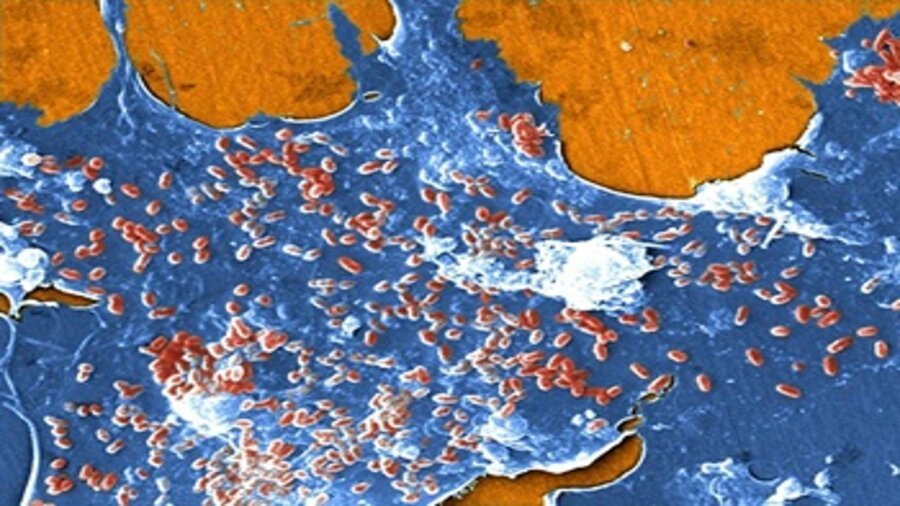Microorganisms are central to both natural and biological cycles, assuming a basic part in environmental guidelines and the well-being of environments. Their cooperations inside different natural frameworks add to a scope of significant capabilities, from supplement cycling and soil well-being to carbon sequestration and climatic synthesis. Their presence and exercises are indispensable to the equilibrium of life on the planet and have sweeping ramifications for worldwide environmental well-being and biological system maintainability.
1. Microorganisms in Environment Health
Microorganisms—microscopic organisms, growths, archaea, and protists—are significant for keeping up with the well-being and working of environments. They assist with decaying natural matter, reuse supplements, and take part in advantageous associations with plants and creatures. Their exercises impact:
a. Nutrient Cycling
Microorganisms are fundamental for the cycling of supplements like carbon, nitrogen, sulfur, and phosphorus. Specifically:
- Carbon cycle: Microorganisms separate dead natural material, delivering carbon back into the climate, which can be used by plants for photosynthesis. Microbial breath and disintegration add to carbon transitions, affecting environmental CO₂ levels.
- Nitrogen cycle: Nitrogen-fixing microorganisms convert barometrical nitrogen into a structure usable by plants while nitrifying and denitrifying microbes direct nitrogen accessibility in soils and sea-going frameworks, influencing biological system efficiency and biodiversity.
- Phosphorus and sulfur cycles: Microorganisms additionally assist with changing phosphorus and sulphur into structures that plants and creatures can utilize, keeping up with soil ripeness and biological system solidity.
b. Soil Health
Soil abounds with microorganisms, which structure complex networks fundamental to plant well-being. Microbial people group in the dirt to separate natural material, assist with keeping up with soil structure, advance water maintenance, and guarantee supplement accessibility. Microbial variety in soil is connected to soil flexibility and the capacity of biological systems to adjust to ecological changes.
c. Symbiotic Relationships
Many plants, parasites, and creatures depend on microorganisms for endurance. Models include:
- Mycorrhizal fungi: These growths structure mutualistic associations with plants, aiding supplement ingestion, especially phosphorus, and safeguarding plants from microbes.
- Stomach microbiota in animals: Microorganisms in the guts of herbivores and omnivores help in processing and supplement assimilation, impacting creature wellbeing and the more extensive food web.
2. Microorganisms in Environment Regulation
Microorganisms play a huge part in environmental guidelines through processes like carbon sequestration, methane creation, and air communication.
a. Carbon Sequestration
Microorganisms in seas, soils, and wetlands catch carbon through cycles like photosynthesis (in marine phytoplankton) and carbon entombment in residue. The microbial breakdown of natural material (e.g., in soils or marine environments) likewise adds to long-haul carbon capacity. Explicit organisms like methanogens tracked down in wetlands and stomach-related frameworks produce methane (a powerful ozone-depleting substance), which can influence the climatic equilibrium of gases.
b. Greenhouse Gas Emissions
Microorganisms are integral to both the emanation and sequestration of ozone-depleting substances. While microorganisms in wetlands, rice paddies, and domesticated animals’ stomach-related frameworks produce methane, others add to the breakdown of ozone-harming substances like nitrous oxide. Microbial movement in soils can likewise impact nitrous oxide emanations, another strong ozone-depleting substance.
c. Oceanic Organisms and Climate
Maritime organisms, especially tiny fish, are fundamental players in controlling the environment through their job in the biological pump. These creatures take up CO2 during photosynthesis and, upon death, sink to the sea floor, eliminating carbon from the climate for extensive stretches. Furthermore, maritime microorganisms impact cloud arrangement and reflectivity by delivering vapour sprayers.
3. Microbial Impact on Environment and Biological Wellbeing With regards to Worldwide Change
The effect of microorganisms on biological system wellbeing and environment turns out to be especially pertinent with regards to worldwide natural difficulties:
a. Climate Change and Microbial Adaptation
Climbing temperatures, sea fermentation, and changes in water accessibility influence microbial networks. A few microorganisms, for example, thermophiles, may flourish in a warming world, while others might decline in upsetting environments. The effect of these progressions can flow up through food networks, influencing higher creatures.
b. Biodiversity and Biological System Function
Loss of microbial biodiversity because of ecological corruption (e.g., deforestation, contamination, environmental change) can disturb key biological system processes like supplement cycling, carbon capacity, and plant development. For instance, the downfall of soil microorganisms because of contamination or dry spells can diminish soil richness and affect food security.
c. Microbiomes and Soundness of Environment Interactions
Human exercises have adjusted regular microbial networks, with modern agribusiness, deforestation, and urbanisation prompting changes in biodiversity. The developing field of microbiome science proposes that even minor disturbances to microbial networks in plants, soils, or seas can have significant environmental results. Understanding microbial elements is fundamental for rationing biological systems despite human effects.
4. Ecological Disclosures Driven by Microorganisms
Ongoing revelations have uncovered exactly the way in which focal microorganisms are to biological system wellbeing and environment strength:
a. Microbial Biodiversity and environmental Resilience
Investigations of microbial variety in outrageous conditions—for example, remote ocean aqueous vents, polar ice covers, and natural aquifers—have extended how we might interpret biological strength. These microorganisms can adjust to outrageous circumstances, and their metabolic pathways can give experiences into supportable practices in farming, squander the board, and energy creation.
b. Bioremediation and Biological System Restoration
Microorganisms are being bridled for ecological remediation, utilising their innate capacities to separate contaminations in soil, water, and air. Bioremediation is a rising field where organisms are utilized to detoxify risky waste, separate oil slicks, and re-establish polluted biological systems.
c. Synthetic Microbial Communities
Researchers are investigating manufactured science to make microbial networks that can resolve ecological issues. For instance, designing microorganisms to sequester more carbon or separate plastics could give inventive answers for environmental change and contamination.
5. Conclusion
Microorganisms are an imperative piece of Earth’s biological systems, with extensive ramifications for the environment and natural well-being. By grasping their jobs in supplement cycling, carbon sequestration, and ozone-depleting substance guidelines, researchers can more readily anticipate the effects of ecological change and investigate methodologies for moderating its belongings. Further examination into the microbial world is fundamental for progressing manageable natural practices and keeping up with the well-being of biological systems in a quickly evolving environment.
